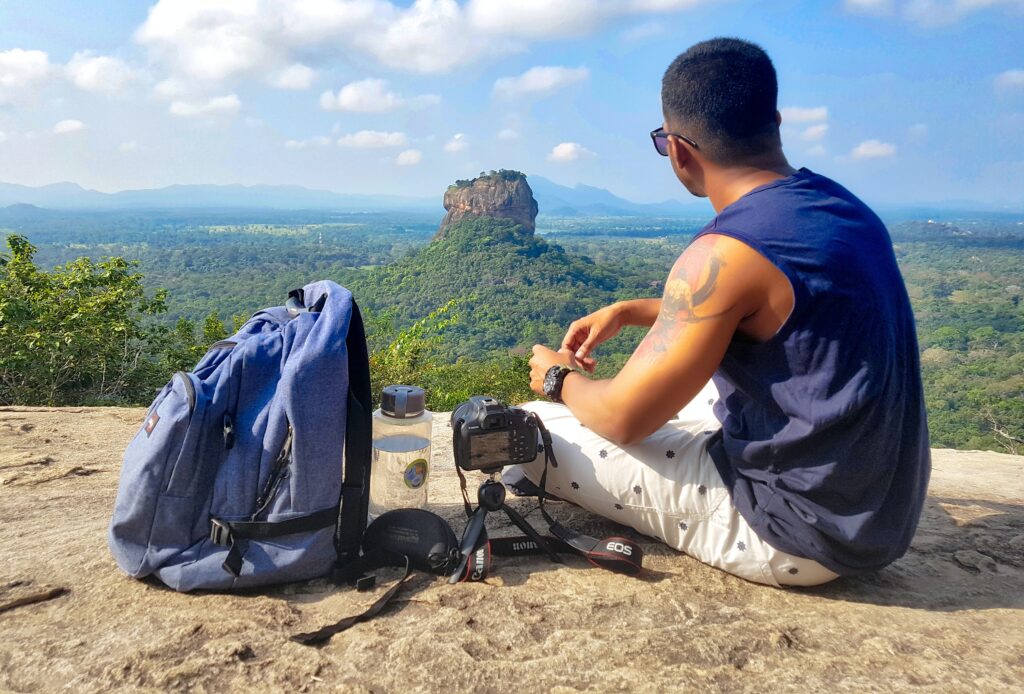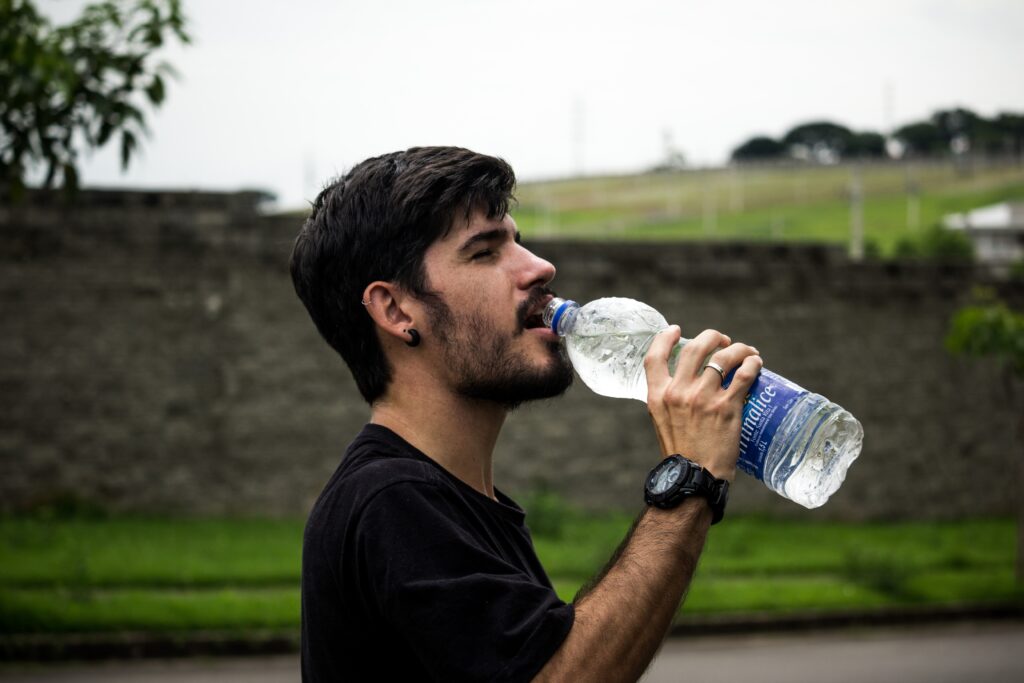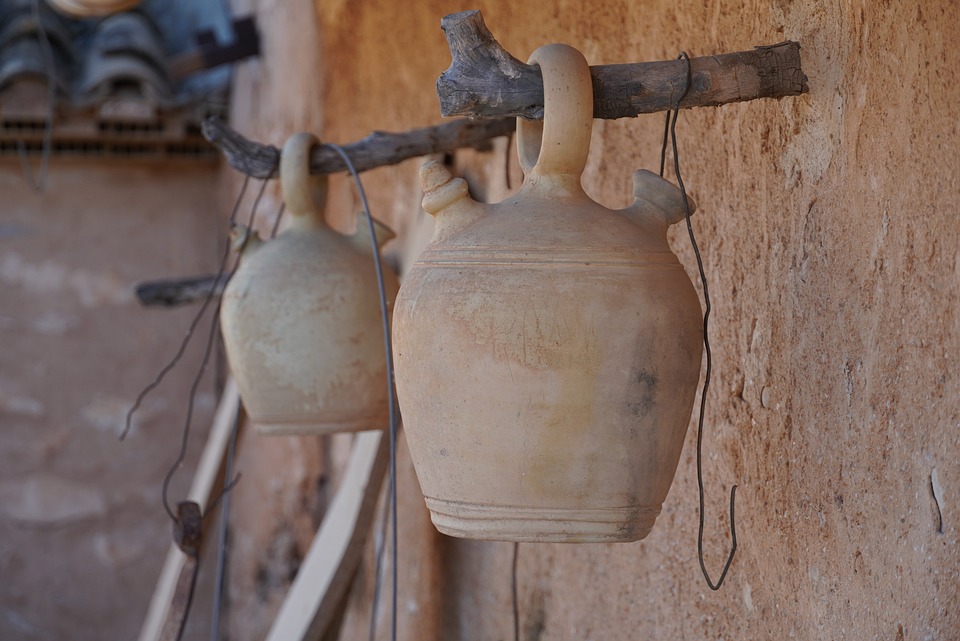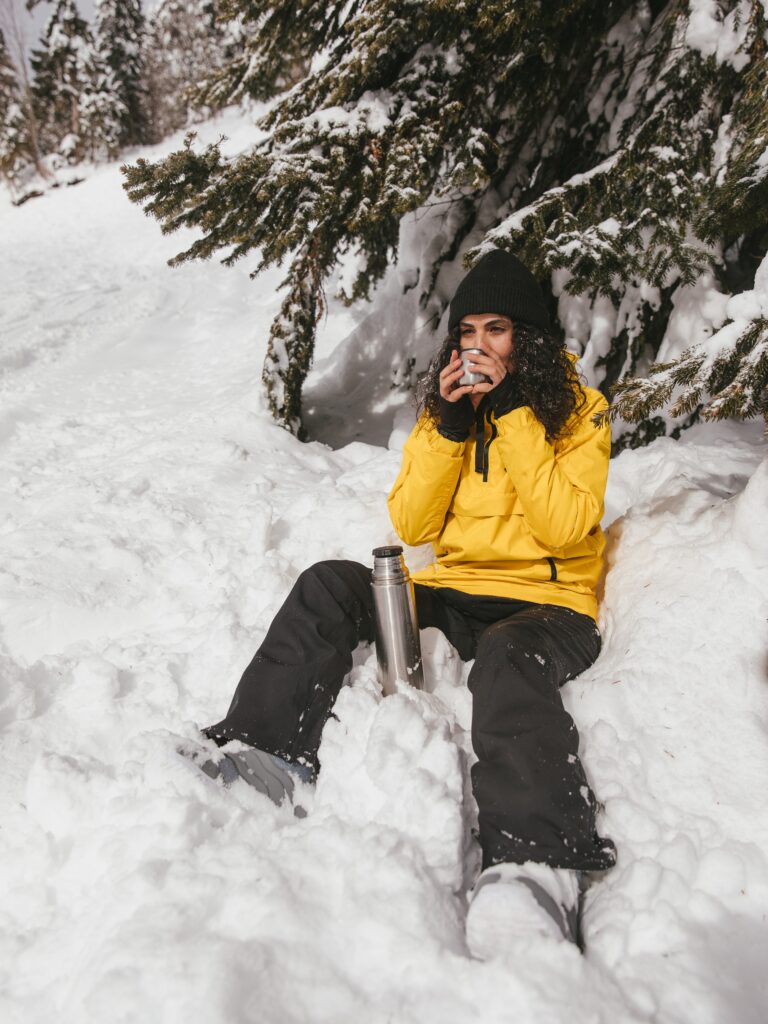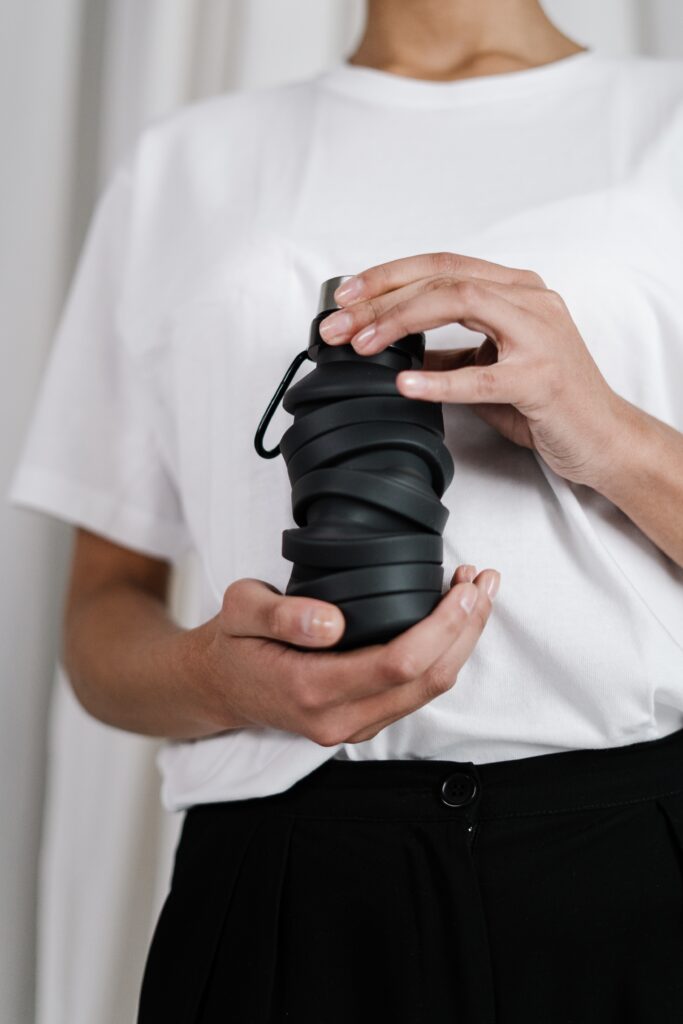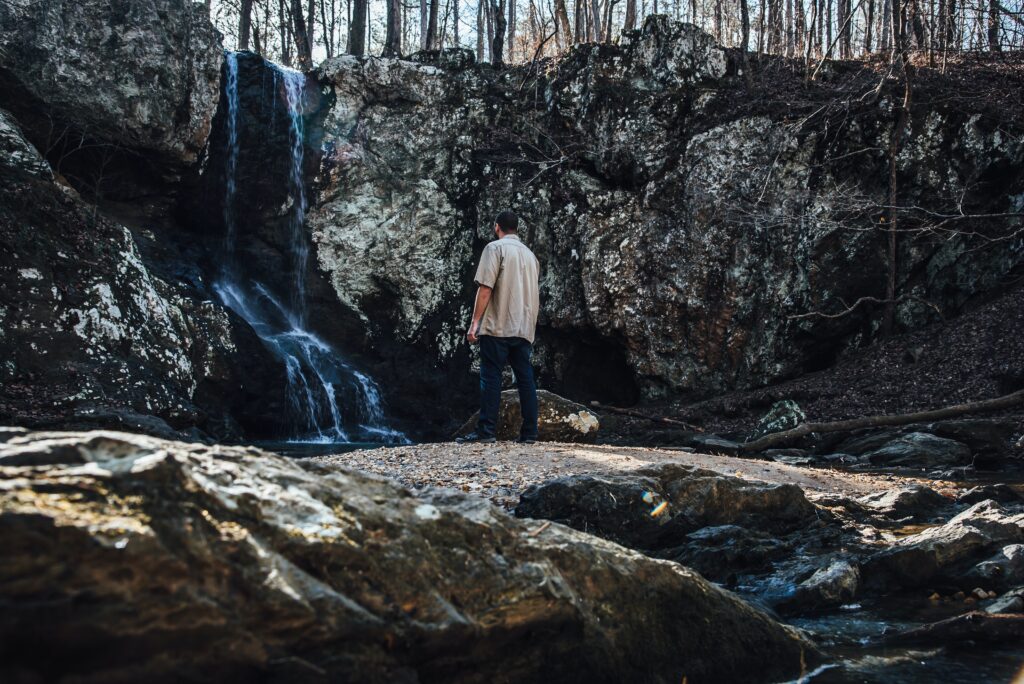Water is a crucial component of hiking. As we all know, the body needs a lot of water to function properly. However, this requirement is more pressing when you are trekking since your body requires more water due to an increase in metabolism.
At a first glance, water may seem like a basic thing. You might plan to buy it from stores or fill it from rivers and streams on your way. However, this will not work out. As you are hiking in the wilderness, finding stores to buy water is almost impossible.
Moreover, your route can go unplanned, where you might have to camp at a mid-point without any stores or rivers nearby. In that situation, how will you survive without sufficient water?
You also utilize water for other purposes such as preparing meals, cleaning, and cooking. Because of this, carrying water is necessary for more reasons than just drinking.
However, you can make a quick fix by just carrying more water. This is true for sufficient hydration but still not enough to cover all your water needs. Water is very heavy; a liter weighs one kilogram. Hence, carrying large volumes will certainly increase your fatigue to the point where it will be too heavy to finish the route.
There are many options for containers to carry water ranging from an ordinary water bottle to a hydration backpack with a filtration system. Today, we will discuss how to carry water while hiking and how much you need.
How Much Water Should You Carry?
You need to carry water along with you when hiking. How much water to carry will largely depend on your hydration needs. For example, hiking in a hot climate will require more intake of water. Thus, you will be carrying more water.
A good estimate is about a liter of water per hour of the hike. It is important to allocate total water intake into segments. Simply, if you plan a route involving 8 hours of hike, you should carry 8 liters of water with you. If you plan to make a quick stop somewhere, or camp out in locations with no water source, add the water for making dinner into your calculations.
In this, you should also add water requirements apart from drinking. That aside, you should plan on contingencies like what if you lost your way, and got stranded with no sources of water nearby? You should always pack a little more water than you need.
What Happens If You Drink Too Little?
If you drink too little water during a hike, this will most likely lead to dehydration. In a hot climate, the body also uses water as a natural coolant to maintain temperature. This is why you start sweating during a hike. However, dehydration means the body cannot offload that heat via perspiration, as a result, it will lower metabolism to reduce heat generation.
Hiking is already a tiring task. It takes an enormous amount of energy and when the body decides to lower energy production to prevent overheating, you will run out of energy and stamina. Pushing more than the body can handle will cause extreme fatigue and loss of consciousness. Eventually, you will pass out.
Your body can last weeks without food, but only mere days without water. Knowing this, limiting water intake especially when you are in direct sunlight for an elongated period performing a high level of physical activity is not a good plan.
What Happens If You Drink Too Much?
Drinking too much water in a short time will overload your body, and might cause water intoxication. Therefore, you should not drink all the water at once. Drinking a liter of water every hour or sipping water whenever you feel thirsty are both excellent ways to hydrate.
Similarly, look out for hyponatremia. This refers to the significant drop in sodium levels, or as the blood starts to dilute from too much water intake. It will make you feel tired, increase confusion, and feels like you will pass out.
Oftentimes, it makes you feel dry. Hence, thinking it is due to insufficient water, people tend to drink even more. The best way to mitigate it would be to drink water in moderation, accompanied by sodium-rich (salty) foods, and add electrolytes to the water.
Different Ways To Carry Water
Here, we will list out various ways you can carry water while hiking.
Water Bottles
Just ordinary water bottles are the first choice of hikers for storing water due to their simplicity of use. As the name suggests, a water bottle is a transparent plastic container with a lid that holds the water inside. You open the lid, store water inside and drink from it whenever necessary.
Thanks to its popularity, almost every store has a dozen variants for sale. Choosing which one is good for you might become difficult. For normal use, most people buy a cheaper bottle made from plastic. It gets the job done, and you can replace it for cheap.
Those cheap containers are not good. They are not tough and some manufacturers use low-quality plastic to keep the costs down. It will cause leakages and can cause serious health hazards. High exposure to sunlight will release harmful elements such as microplastic.
Therefore, you should clean them frequently and replace them immediately if you find any weird taste or odor from the water. Despite some drawbacks, water bottles are the most popular container for carrying water while hiking.
In addition, most bags in the market comes with a pocket to keep the water bottle on either side. It will evenly distribute the weight so you can maintain a good balance. In case you like water bottles but do not want to risk it with a plastic one, check out steel water bottles. A steel water bottle is certainly more expensive than a plastic bottle, but they provide excellent durability for hiking.
Hydration Bladders
Recently, hydration bladders are getting popular among hikers. It has a pouch where you store water, and a nozzle or a straw-like tube from where you can drink water hands-free. Unlike water bottles, which typically come in 1-liter size, you can get hydration bags of much larger capacity. Even better, you can drink it without even taking the bag out.
A hydration bladder provides more functionality than water pouches with a straw. The first improvement comes from its compatibility with your hiking backpack. Unlike other pouches or bottles, which go in the bag and slide all the time, the hiking backpack comes with a mounting mechanism made to attack these bladders. It is simple to attach and stays constant in the same place the entire day.
Sometimes, it is super easy to forget that you need to intake water when enjoying the hike. However, you should not wait until you feel thirsty to take a sip. The body will send signals much later after you get dehydrated. As you attach the hydration bladder’s nozzle outlet near your shoulder location, it is lying in front of your eyes all the time. Since it is constantly available, you will surely never forget about your hydration needs. Even better, you can keep sipping from it hands-free.
If you invest in a good hydration bladder, it will hold 4 to 5 liters of water and provide you constant water supply. There are some cheap options but they face the usual problems like a bad smell, leakages, etc. If you are carrying soft containers and a water pouch, pay special attention to it. These can easily break and make all your items wet, which will be unfortunate on a long trip.
Premium ones do not smell bad nor do they break easily. However, it will not keep the water temperature for a long time. So, it can get cold quickly in certain climates.
Steel Bottles
Steel bottle is the better version of the water bottle that we discussed earlier. It more or less averts all the drawbacks of a plastic one. Starting with the build quality, these bottles come with a stainless steel interior.
The exterior gets better the higher you go on the price chart, but usually, they come with a rubberized grip. This insures a rigid build, which can take drops and a large volume of pressure without getting any damage. Moreover, steel is non-toxic, and corrosion resilient and you can clean it in dishwater.
Steel is heavier than plastic. Those layers of steel with exterior coating and heat-resilient materials will take up a lot of space. For the same size, steel bottles will hold less water and weigh more compared to plastic water bottles.
Despite being slightly heavy, a steel water bottle is virtually unbreakable. It may not survive hits from a hammer, but that is an extreme case for a water bottle. Thus, if you are tired of water bottles breaking and causing leaks, steel bottles will be a great addition to your backpack.
Steel bottles typically have upscale features added by manufacturers since they are a costly alternative. It will regulate the temperature that keeps your water at a steady temperature. Most steel bottles even have a coating of anti-fungal materials and a good rubber grip on the outside. They also have switchable lids, which you can change, as you want.
Collapsible Water Bottles
Rigid water bottles and containers cover too much of your backpack space. After drinking, these empty containers will take up similar space unless you keep throwing containers out. Therefore, you will choose to carry only a minimum amount of water with you. This further limits how much water you can fill later from a water source.
Foldable water bottles are a great solution to both of these problems. A good hiking route will follow a decent water supply, preferably rivers, streams, and the like. This will lower the need to carry large volumes of water during hiking.
With collapsible water bottles, you can simply fold them and toss them in either your pockets or the backpack easily. Then when necessary, you can take them out, fill them with water and carry it like a normal water bottle.
If you want some containers, just to filter water from a nearby water source for temporary use then you should consider getting a collapsible water bottle.
How to Get More Water?
Due to limitations on how much water you can carry while hiking, you need water sources to fill your water containers from time to time. This is also one way to carry water while hiking.
For this, map out all the sources from where you can get water in your trekking route. You can explore travel guides or ask veteran hikers for information about this.
Start with plenty of water to reach the first water source. When you reach there, hydrate yourself and fill water bottles with adequate water to reach the next water source.
Should You Drink Water Directly From Rivers And Streams?
No, you should not drink water directly from water sources in the wild. They are prone to harmful substances, animal droppings, and dirt. Hence, it is better to filter the water first than to catch diarrhea and fever on the first day by drinking contaminated water.
A good filter will help you to make the water safe to drink. These come in different forms. The most basic filter would be activated charcoal. You can keep it in a straw and drink from a river directly. It may clean some debris and dirt, but do not expect charcoal to make the water very clean.
There are filtered water bottles available in the market. Here, filters come alongside the cap so it will filter water when poured into the container. It can slow down water filling time, and if the filter comes in the nozzle of the hydration bladder, you will have to pull extra hard to drink.
Inline filtration has come a long way. Nowadays, you can purchase backpacks, water bottles, hydration bladders, and even hiking sticks with a built-in filtration system. If you invest in a good filter, it will help you for a long time during off-road travels.
Conclusion
So far, we have explained various ways to carry water while hiking with their respective pros and cons. From this information, you can decide a few things, how much water you need to carry, the capacity of water storage units, and the ideal way to carry water for your hike.
Try to maintain both of these as low as possible. Plan a route with plenty of water sources, that way you can make the backpack lighter. This way, you will carry adequate water with you, and plenty of empty water storage units. It is always best to carry only the essentials and enjoy the hike without worrying about water needs.
FAQ
How much water do I need for a hike?
You will need one liter of water per hour of hiking on average. You should sip water constantly throughout the hike, even though you do not feel thirsty. Additionally, you require an extra supply of water for functions other than hydration, such as food preparation, cleaning, and emergency responses.
What happens if you do not drink enough water on a hike?
Drinking an insufficient amount of water during a hike will lead to dehydration, and eventually, the body shuts down. This will be a major inconvenience for your hiking team. Consequently, you may have to return without completing the route. In extreme cases, you can even die from drinking not enough water.
Can you drink too much water while hiking?
Yes, drinking too much water will lead to hyponatremia. Our body has a certain limit of filtration, which is about 0.9 liters per hour. Increasing water intake significantly will cause a load on the kidneys. This will inevitably dilute sodium levels. In addition, cells will absorb excess water and becomes bloated. This will lead to a life-threatening situation if not dealt with quickly. Proper medical care is difficult to obtain when trekking.

